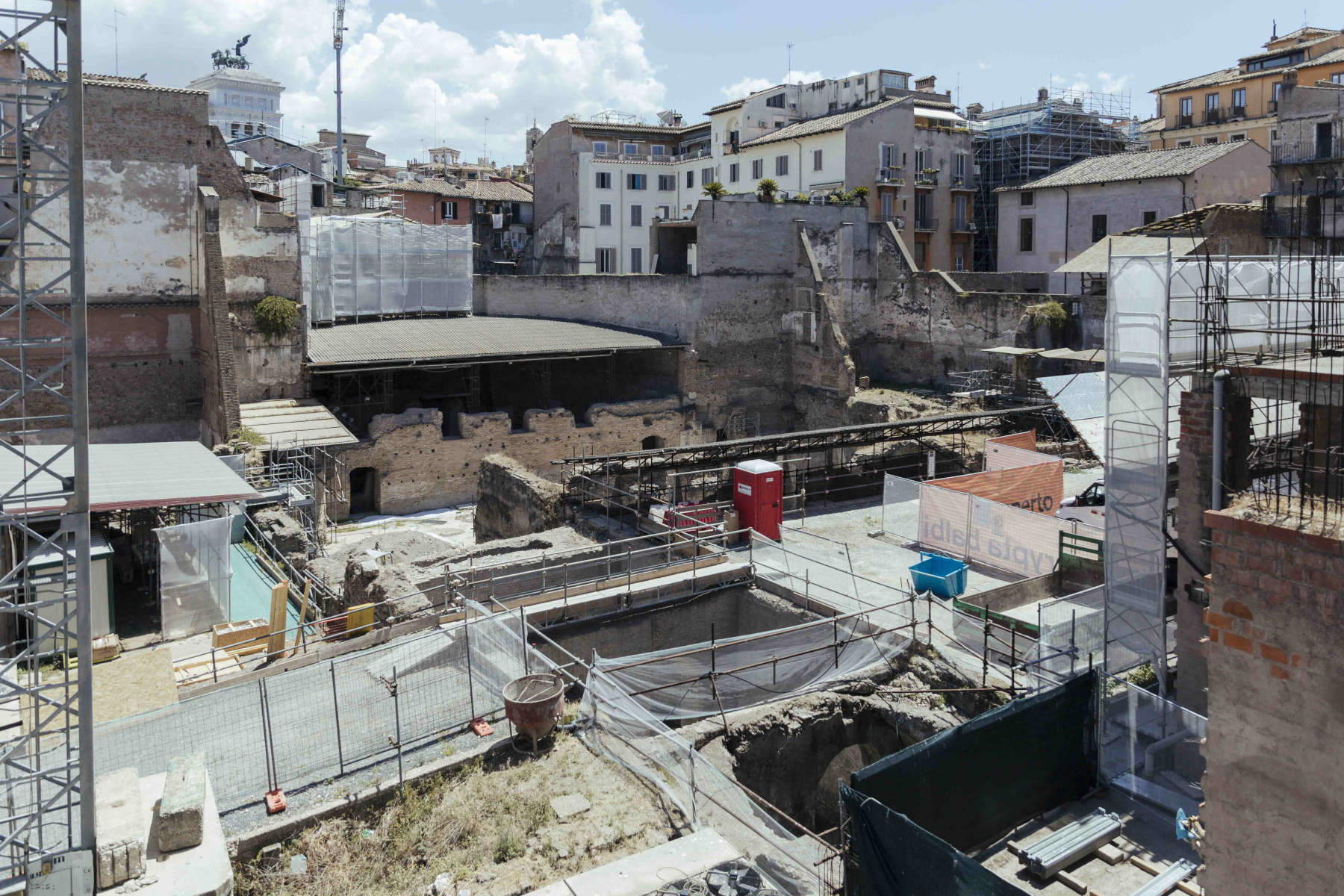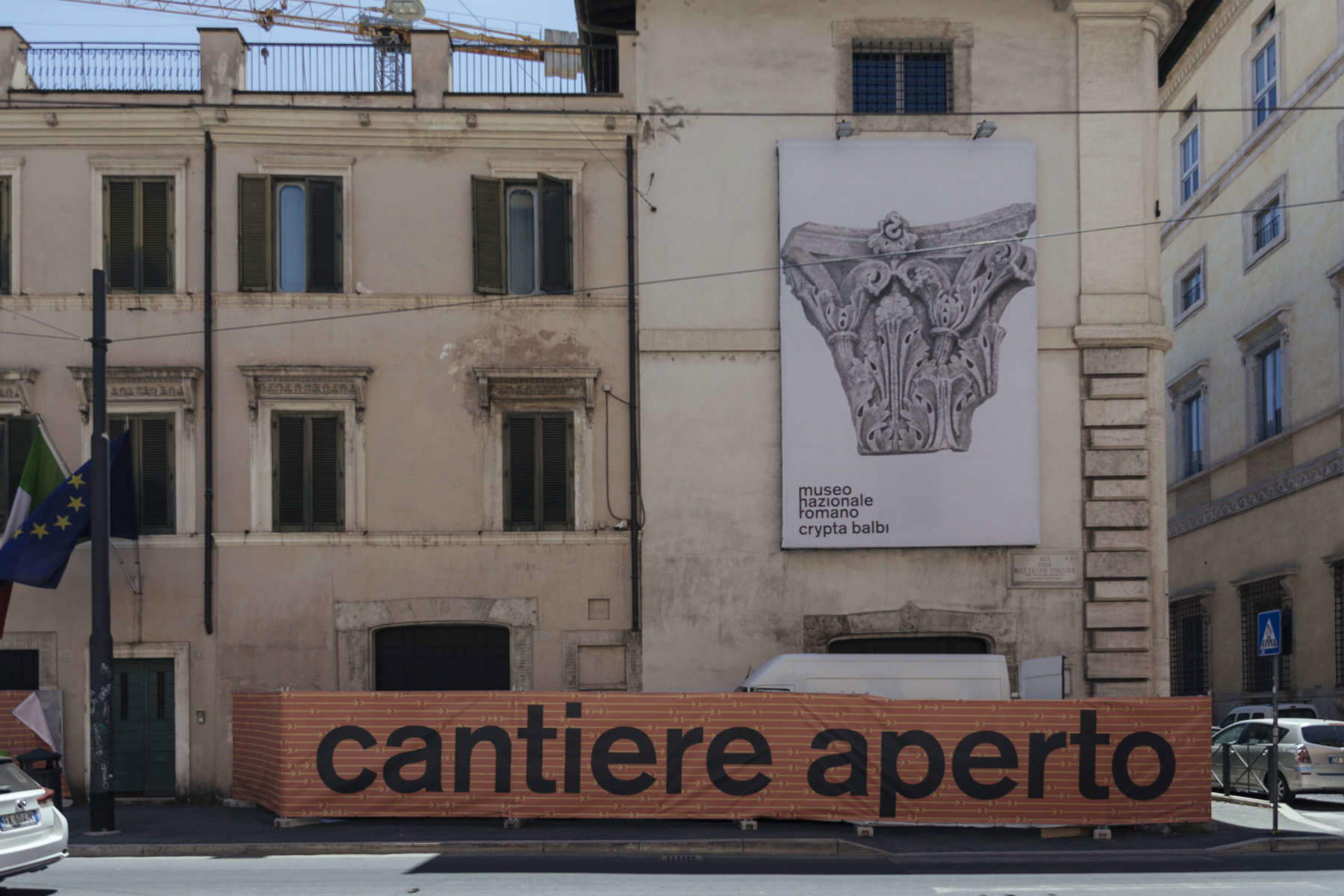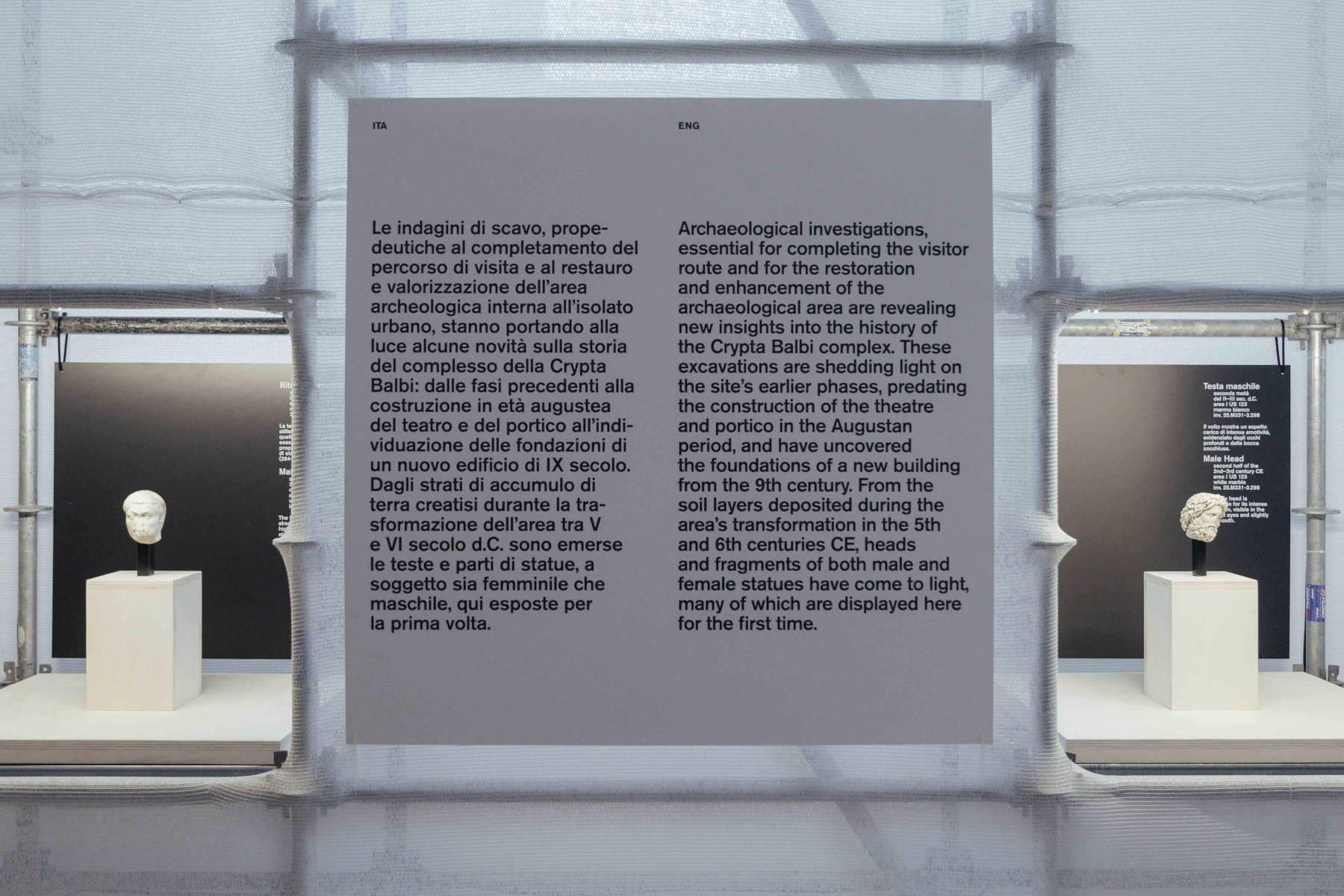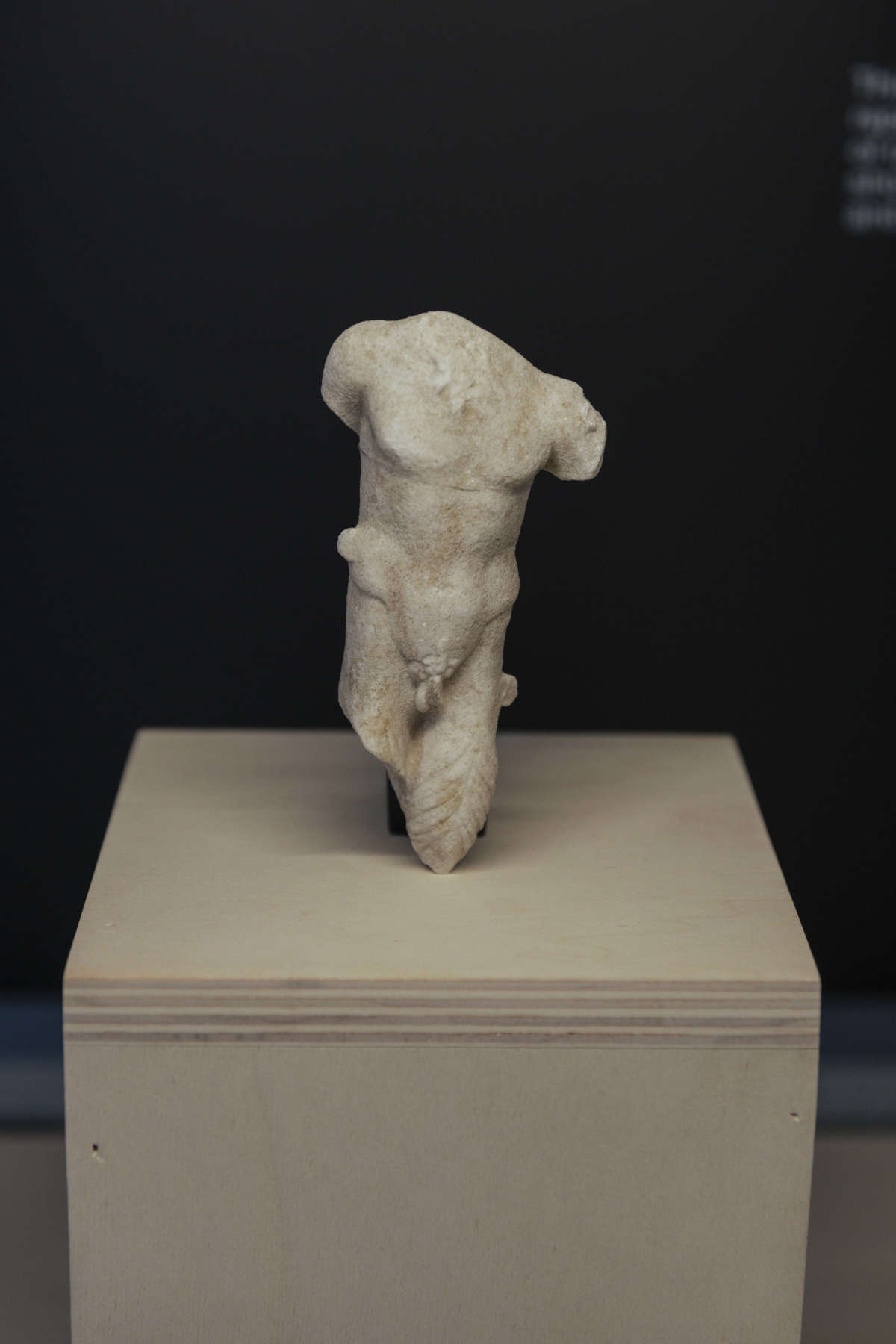In Rome, the Crypta Balbi reopens to the public, but not only as an archaeological site: in fact, it becomes an “open construction site,” a living laboratory where visitors and scholars can witness live the rediscovery of Rome. The initiative, curated by Edith Gabrielli and Antonella Ferraro, is called Crypta Balbi: open construction site and was officially presented yesterday. Starting July 12, 2025, every Saturday it will be possible to access the free guided tour to explore the area affected by excavations and restoration, a unique opportunity to “walk through history as it resurfaces, literally, from the earth.”
The intervention is part of a broader redevelopment operation that began in January 2023, when the Crypta Balbi site of the National Roman Museum was closed to allow nine excavation and restoration works, five of which were financed by the Urbs project - part of the National Complementary Plan (PNC) to the PNRR - with an investment of 50 million euros.
“The Crypta Balbi,” says Alfonsina Russo, head of the Cultural Heritage Enhancement Department of the Ministry of Culture, “is a unique place in the world for its exceptional urban stratification. With Edith Gabrielli, who is leading the National Roman Museum in this transitional phase, we have pursued the nine ongoing construction sites, including the five funded with more than 50 million euros from the National Plan for Complementary Investments (PNC) to the PNRR, while thinking about a project to open it to the public. The goal has been twofold: to revitalize this as well as the other venues of the National Roman Museum and to create the best working conditions for the new director or director, whose selection is nearing completion. I am grateful to the staff of the National Roman Museum and to all the external operators, professionals and businesses, who enabled us to achieve this result.”
“The Crypta Balbi,” echoes Edith Gabrielli, director of VIVE - Vittoriano and Palazzo Venezia and acting director of the National Roman Museum, "is an extraordinary place that encapsulates the entire history of the city: an area that, from antiquity to the twentieth century, tells the story of Rome through its changes, its transformations, and its continuities. Today this place is affected by a complex excavation and restoration work that, for its conclusion, will still take some time. The risk in such cases is that the site will eventually fall out of the collective imagination and thus fall into oblivion. It is precisely in order to avert this danger that Crypta Balbi open yard was born: an initiative designed to keep the public’s interest and affection alive, to start a path of valorization from the very beginning and to make citizens’ participation truly active."


Located between Via delle Botteghe Oscure, Via Michelangelo Caetani, Via dei Delfini and Via dei Polacchi, the Crypta Balbi is an extraordinary site, unique in its ability to tell the story of over two thousand years of urban stratification. It all began in 13 B.C., when Lucius Cornelius Balbo, an influential politician and military man of Hispanic origin, had a theater built flanked by a large porticoed courtyard: the crypta, from which the entire complex takes its name.
In the following centuries the area underwent continuous transformation: in the early Middle Ages it housed the church and convent of Santa Maria Domine Rose, later replaced in the 16th century by a new complex dedicated to St. Catherine of Alexandria, which remained active until 1940. Only in 1981 did the Italian state finally acquire the entire area, integrating it into the National Roman Museum as one of its four sites.
Crypta Balbi: open construction site is not only an opportunity to visit an area normally inaccessible, but a true educational and cultural experience. The tour begins on Via delle Botteghe Oscure, continues through the second floor of the Barberinian Dormitory - part of the former Santa Caterina de’ Funari complex - and opens with an introductory video produced by Light History s.r.l. for the Museum, directed by Mary Mirka Milo. In the film, two authoritative specialists, Daniele Manacorda and Federico Marazzi, joined by key figures from the Museum’s team such as archaeologist Antonella Ferraro, architect Saveria Petillo and restorers Debora Papetti and Fabiana Cozzolino, tell the story of the Crypta and the latest discoveries from the excavations.
The tour includes a selection of hitherto unpublished archaeological finds, displayed in a structure set up especially for the occasion. Prominent among the finds is a Corinthian pilaster capital, whose refined decoration recalls that of the Forum of Augustus, but which had been reused as the lid of a late antique sewer.
Several heads and parts of statues also emerged, including two female ones-one with an elongated face and wavy hair, the other with features traceable to Hellenistic depictions of Venus-and two smaller male ones, probably belonging to sarcophagal decorations. Also noteworthy is a headless statuette with goat legs, identified as the god Pan, an agrarian deity. A marble relief with a female figure in chiton and himation may represent Athena, although the aegis with the gorgoneion is missing.
Studio TassinariVetta curated an ad hoc exhibit designed to facilitate orientation and understanding of the contents in a complex archaeological context. The concept is based on the concentration and clarity of information, creating a reference architectural space that accompanies the public in the visit. The graphic design recalls the visual identity of the National Roman Museum, created by the same studio in 2017, with a contemporary visual language designed to enhance a heritage that continues to speak to the present.
Guided tours will be free of charge and will take place every Saturday starting July 12, 2025, at 10:30 a.m. and 12:00 p.m., by reservation through the National Roman Museum’s official website: https://museonazionaleromano.beniculturali.it/crypta-balbi-cantiere-aperto.


Among the most surprising finds is the discovery of a never-before-documented building: a two-aisled construction, 28 meters long and 15 meters wide, with a north-south orientation, whose construction dates back to the 9th century. Stratigraphic data indicate that the building was abandoned before completion, possibly as a result of seismic events in 801 and 847 AD. The most widely accepted hypothesis is that it was a cult building that was never completed, a thesis also supported by its location and building type. Studies on this complex are still in progress, but even now the discovery represents a key piece in understanding the transformations of the area in the early medieval period.
Another exceptional find is the bothros, a votive pit in the center of the archaeological area, containing animal horns, pottery and materials dated to the second century B.C., well before the construction of Balbo’s theater. The presence of this ritual structure opens up new interpretations about the original purpose of the area, perhaps the site of a sanctuary. The finding could confirm the existence of a temple connected to the theater, as was the case with the Theater of Marcellus or Pompey, contrary to other hypotheses that indicated the presence of monumental fountains.
During excavations in the earth levels formed between the fifth and sixth centuries CE, a period when the monument was by then abandoned, several sculptural fragments were found. These include a female head with an elongated face, very pronounced eyebrow arches, large eyes, full lips, and a pelta-shaped forehead. The hair, wavy and arranged in wavy bands with central parting, was probably complemented by an additional element attached with glue, given the absence of pins. Slight traces of color are preserved on this surface. Another female head has a hairstyle held by a tenia, with wavy locks gathering in a knot at the top of the head; because of its characteristics, it can be traced to Hellenistic representations of the goddess Venus.
Two small male heads have also emerged, possibly part of the decoration of a sarcophagus. One shows a highly simplified style typical of Tetrarchic-era portraiture, while the other depicts a bearded man with wavy hair and a full beard, both made with deep drill holes. Also of special interest is a white marble relief fragment depicting a standing female figure, dressed in a light chiton and himation that wraps the body in sinuous folds. Her left arm, raised, appears to be supporting an attribute, perhaps a spear, suggesting a possible identification with Athena, although the aegis on her chest is missing.
Finally, a small headless statuette with goat legs was found, allowing it to be identified with the god Pan, a deity linked to pastoral life. A curious find concerns a large Corinthian pilaster capital, used as a closing slab for a late antique sewer shaft; because of its naturalistic rendering and plastic composition, it finds comparisons with the capitals of the temple of Mars Ultor in the Forum of Augustus.
 |
| The Crypta Balbi reopens as an "open construction site": live archaeology in the heart of Rome |
Warning: the translation into English of the original Italian article was created using automatic tools. We undertake to review all articles, but we do not guarantee the total absence of inaccuracies in the translation due to the program. You can find the original by clicking on the ITA button. If you find any mistake,please contact us.